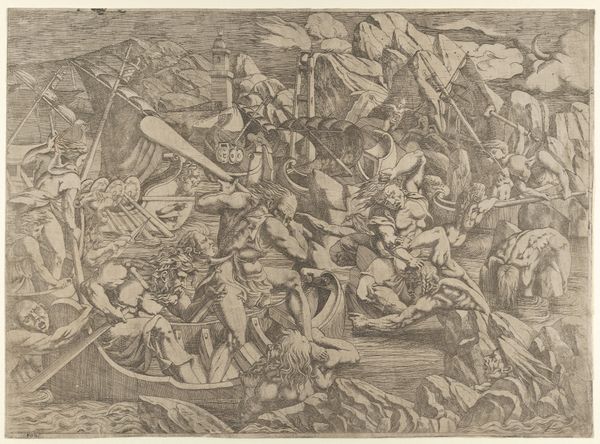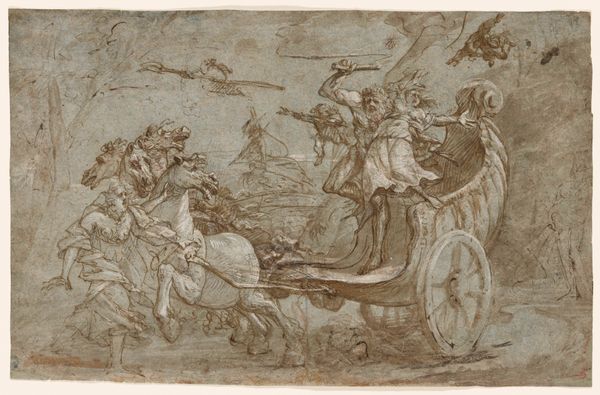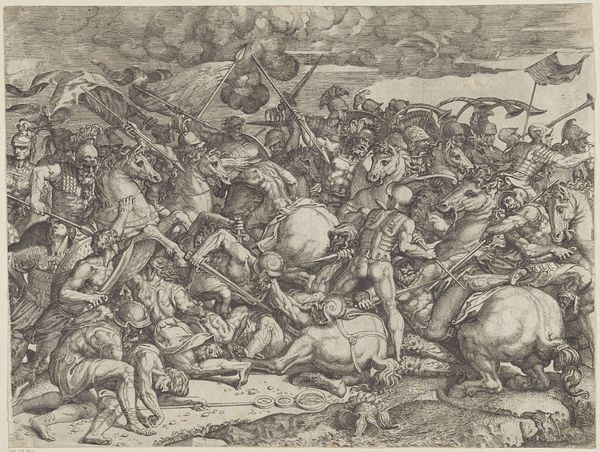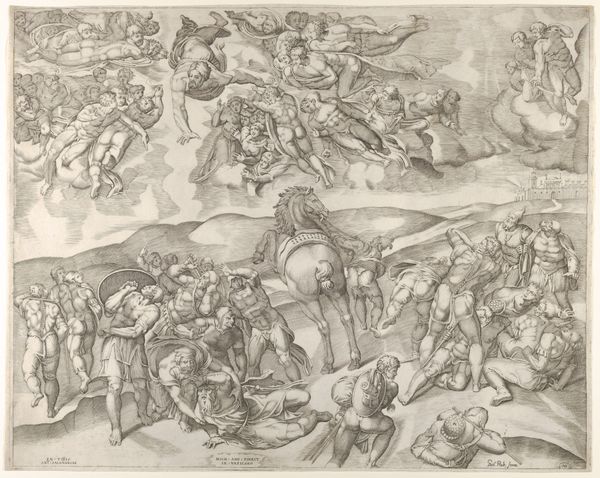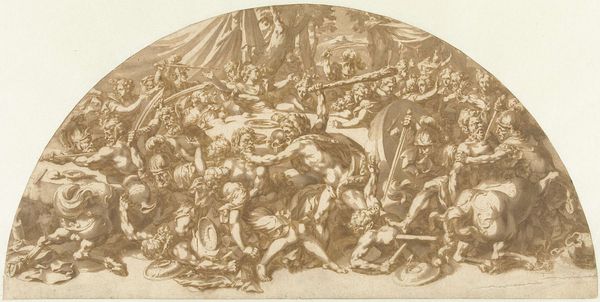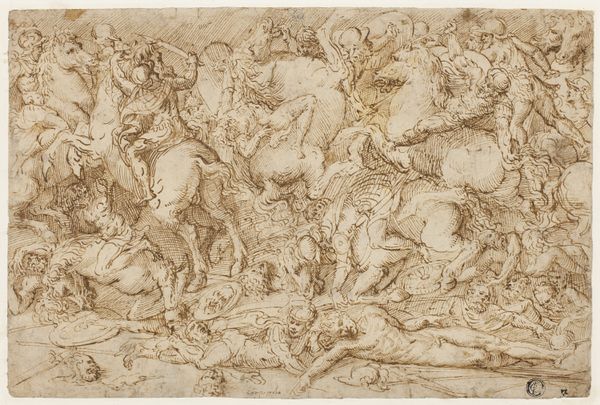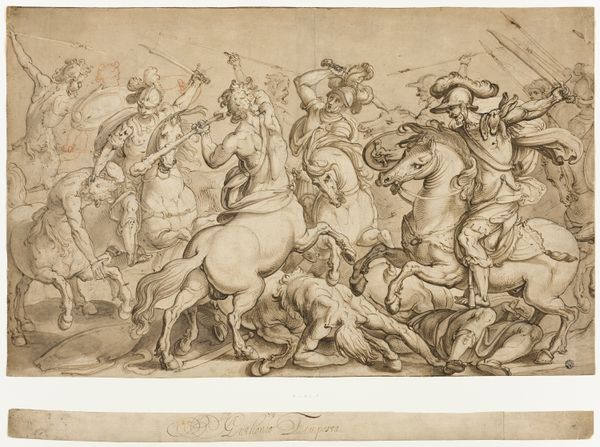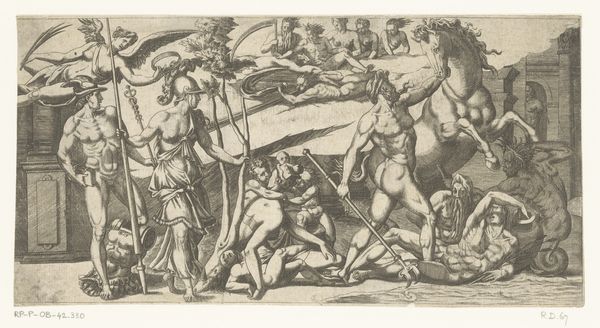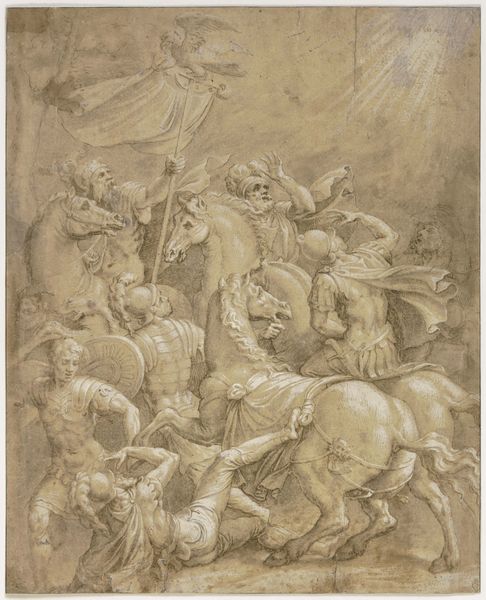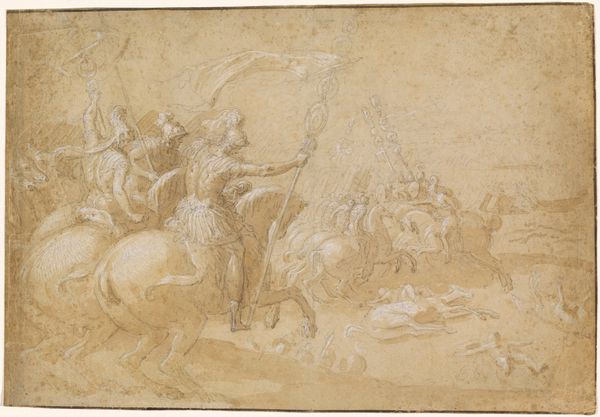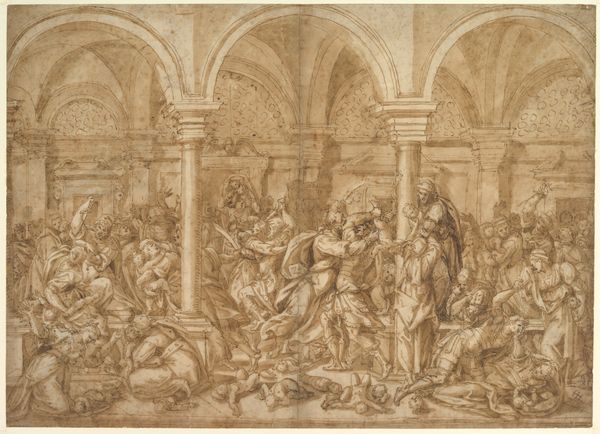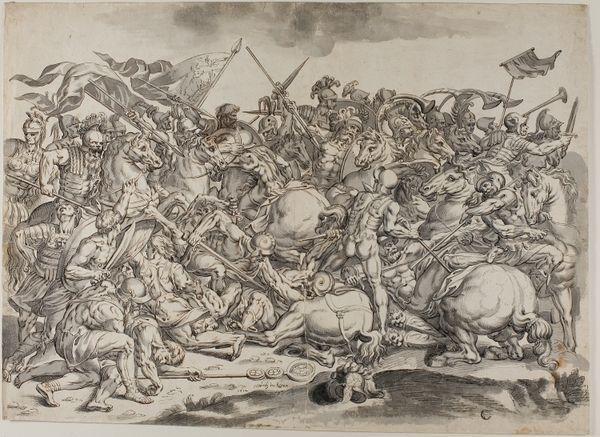
drawing, print, paper, ink, graphite, charcoal
#
drawing
#
narrative-art
# print
#
landscape
#
charcoal drawing
#
figuration
#
paper
#
ink
#
ancient-mediterranean
#
men
#
graphite
#
charcoal
#
history-painting
Dimensions: 364 × 557 mm
Copyright: Public Domain
Editor: So, here we have an anonymous drawing, titled "Battle between Romans and Barbarians." It's rendered in ink, graphite, and charcoal on paper, and it looks to be quite old, judging from the style. The whole thing feels very chaotic, a swirling mass of figures in conflict. What strikes you most about this piece? Curator: The enduring human fascination with conflict is clearly on display here. Battles, especially those framed as clashes between civilization and barbarity, are ripe with symbolic potential. Notice the banners – though indistinct, they represent power, identity, and allegiance, visually condensing complex cultural narratives into simple, portable images. What do you make of their prominence within the composition? Editor: Well, they certainly draw the eye upward, away from the carnage below. They also seem to be about equal in size; is it possible the artist is showing more nuance, suggesting each side thinks they’re the ‘civilized’ one? Curator: Precisely! It invites us to question who defines 'civilization' and 'barbarity.' What one culture considers noble, another might deem savage. Look at the intertwined bodies of the warriors and horses – they reflect the deeply rooted nature of struggle and perhaps represent a symbolic merging of opposing ideals or anxieties of influence. This cultural memory is what shapes our present perception of those times. Editor: That's fascinating. I hadn't thought about it in terms of cultural memory, but the symbolism makes the conflict about more than just a physical fight. Curator: Yes, images like these crystallize shared beliefs, fears, and even justifications for actions across generations. This piece reflects not only history, but a process through which cultural narratives and identities are continuously reshaped and reinforced through symbols. It encourages dialogue about identity and challenges preconceptions about 'us' versus 'them.' Editor: I'll definitely look at historical artwork differently from now on, paying closer attention to what those symbols were trying to say.
Comments
No comments
Be the first to comment and join the conversation on the ultimate creative platform.
